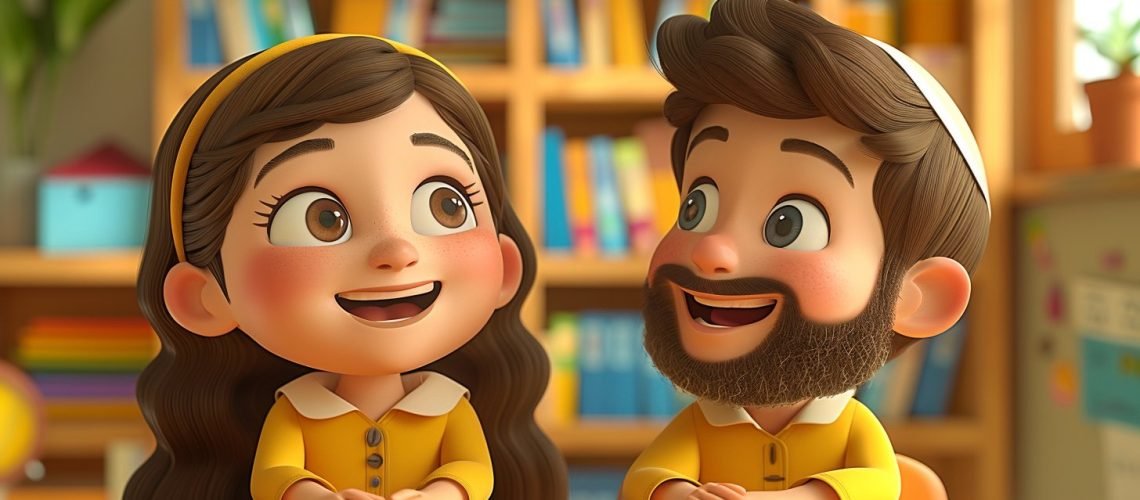Learning Hebrew can be a delightful journey when infused with fun methods. Ulpan Integraliah, based in Tel Aviv, offers innovative learning experiences using cartoons and animations. This article explores how these playful tools support learners of all ages in grasping the Hebrew language effortlessly.
The Benefits of Learning Hebrew with Cartoons
Cartoons captivate both kids and adults, making language learning engaging. With colorful visuals and entertaining storylines, cartoons grab attention immediately. They simplify complex concepts, allowing learners to absorb vocabulary and grammar intuitively.
Immersive Experience Through Animations
Animations create a vivid context for new words and phrases. They include visual cues that enhance comprehension. For example, a character saying “שלום” (shalom) while waving helps associate the word with greeting naturally.
Simplifying Abstract Concepts
Abstract concepts become clear through visual storytelling. An animation depicting seasons can teach the words for winter (“חורף”) and summer (“קיץ”). Learners relate the language directly to real-world scenarios.
- Visual learning aids memory retention
- Colorful animations hold interest longer
- Storylines provide a narrative context
How Ulpan Integraliah Incorporates Cartoons into Courses
Ulpan Integraliah uses cartoons strategically within its courses. Each lesson features carefully selected animations aligned with the curriculum. These animations supplement traditional teaching methods to boost understanding and engagement.
Custom Content for Diverse Age Groups
Ulpan Integraliah designs specific content for toddlers, kids, and adult learners. Cartoons tailored to different age groups address their unique learning needs. A toddler might enjoy simple animations with basic vocabulary. Meanwhile, older kids engage with more complex stories that introduce advanced sentences.
- Toddlers: Basic vocabulary
- Kids: Intermediate phrases
- Advanced learners: Complex narratives
Interactive Exercises Complementing Videos
After watching cartoons, students engage in interactive activities. Quizzes, matching games, and speaking exercises reinforce lessons learned from animations. For instance, after viewing an animation about animals, learners might match Hebrew names to animal pictures.
Progressive Difficulty Levels
The course structure follows a gradual increase in difficulty. Beginners start with fundamental words, progressing to sentences. Advanced learners tackle full conversations embedded in animated shorts. This method ensures steady language development.
Cultural Immersion Through Songs and Shows
Songs and TV shows serve as excellent supplementary tools for learning Hebrew. Music combines rhythm and repetition, aiding memorization. Shows expose learners to cultural nuances.
Hebrew Songs as Educational Tools
Songs provide a melodic way to remember words. Catchy tunes make repetitive practice enjoyable. For example, Ulpan Integraliah integrates classic Hebrew children’s songs into lessons, which help in grasping common phrases swiftly.
- “היונתי ציפור קטנה נחמדת” (My dear little dove)
- “עשר אצבעות לי יש” (I have ten fingers)
Popular Hebrew Shows for Immersive Learning
Watching popular Israeli shows provides contextual use of language. Teen dramas, sitcoms, and even animated series enrich vocabularies. Subtitled episodes assist beginners by linking spoken and written texts. By immersing in daily dialogues, viewers encounter colloquial expressions and slang.
Combining Media with Structured Lessons
Media offer practical usage examples, enhancing formal lessons’ effectiveness. Ulpan Integraliah leverages platform websites to stream educational content seamlessly. Structured lessons prepare students to comprehend and appreciate media fully.
Effective Strategies for Parents Using Cartoons and Songs
Parents can use tried-and-true strategies to help their children learn Hebrew with cartoons and songs. Engaging with these materials together builds a supportive learning environment.
Setting Up a Consistent Routine
Consistency is key to language acquisition. Establish regular times for watching educational cartoons or singing Hebrew songs. Routine practices embed new vocabulary gradually.
Interactive Learning Sessions
Turn viewing time into interactive learning opportunities. Pause cartoons to ask questions about words or scenes. Singing along with songs and discussing lyrics also enhances understanding.
Choosing Age-Appropriate Material
Select cartoon and song content suitable for your child’s age. Younger toddlers benefit from simpler animations and repetitive songs. Older kids enjoy narratives with richer vocabularies and intriguing plots.
- For toddlers – Short animations, nursery rhymes
- For preschoolers – Alphabet songs, counting animations
- For school-aged children – Story-driven cartoons, thematic songs
Maximizing Learning with Online Courses and Resources
Online platforms offer extensive resources to complement cartoon-based learning. Ulpan Integraliah’s website offers comprehensive courses available anywhere.
Flexible Learning Schedules
Online courses grant flexibility, accommodating varied schedules. Learners progress at their own pace. This flexibility makes it feasible for busy individuals to integrate learning.
Diverse Learning Tools and Support
Integrated tools like discussion forums and live chats allow asking questions anytime. Interactive elements such as flashcards and quizzes ensure dynamic participation, keeping students engaged.
Enhanced Accountability and Tracking Progress
Regular assessments and progress reports help track language acquisition milestones. Feedback from instructors pinpoints strengths and areas needing improvement. Both self-assessment and guided evaluations solidify knowledge.
Learning Hebrew through cartoons brings joy to the educational process. Fun methods have proven effective in every demographic, fostering a deeper connection to the language. At Ulpan Integraliah, embracing imaginative tools enhances both engagement and retention.


